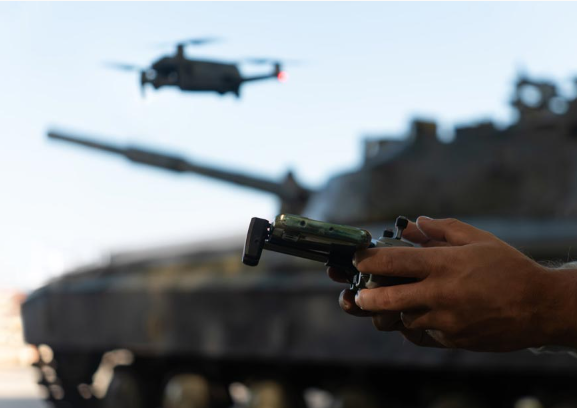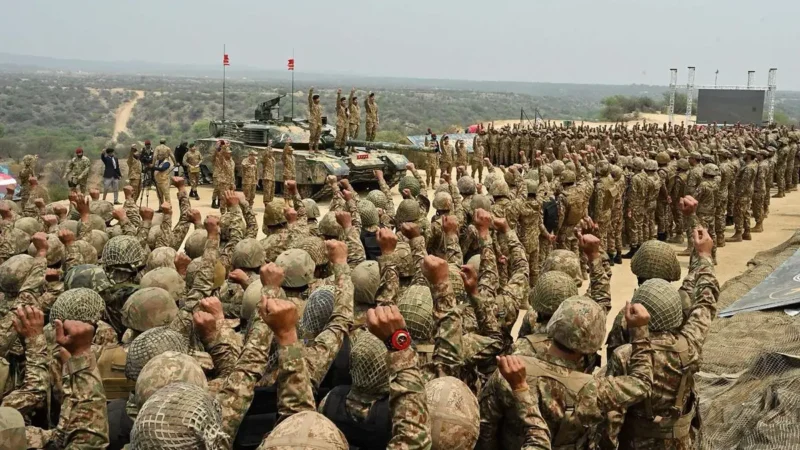Middle Eastern modern warfare: advance defense vs intelligence

Over the past 15 months, the crisis-driven Middle East has spotlighted a gamut of strategic choices made by state and non-state actors to drive home their political agendas and shape regional geopolitics to their advantage. The terror attack by Hamas against Israel on 7 October 2023, mobilised both Israeli and Iranian strategies as close to a full-scale conventional war as possible. While Israel concentrated on degrading Hamas in Gaza and later Hezbollah in Lebanon, Iran’s “Axis of Resistance” design also faced significant turbulence.
The Israel-Iran dynamic has quietly underpinned the Middle East’s strategic contest for many years, as Arab powers concentrated more on building their economic and financial might. They also prioritised the development of short-term deals with foes such as Tehran, and back-channel talks with Israel, to build a level of neutrality. However, Israel has prioritised intelligence as its choice in building a “forward offence” strategy to counter Iran’s “forward defence” (also known as “offensive defence”), conceptualised and built under the late Islamic Revolutionary Guard Corps (IRGC) Chief and Head of the Quds Force, Qasem Soleimani.
Forward offence
Israel’s intelligence agencies, particularly its external intelligence agency, the Institute for Intelligence and Special Operations—better known as the MOSSAD—have for long been its first line of defence, both strategically and tactically. The leading idea of Israeli security thinking is to act against perceived threats in an aggressive but targeted manner, in a way that many of the agency’s peers do not operate. This posture allows for threat perceptions to be dealt with before conventional warfare needs to be initiated. Since Israel is a small state, conventional conflict is a potentially costly and existential affair. While Israel has previously delivered well in a conventional setup, as witnessed during the Yom Kippur War of 1973 when it repelled a coalition of Arab states led by Egypt and Syria, an intelligence-first approach prioritising clandestine operations gives the state a significant first-line of kinetic, rather than just strategic, defence. This strategy has included more controversial methods, such as assassinations. Journalist Ronen Bergman, in his detailed account of covert Israeli security methodologies, traces a prioritisation of assassination as a core tool of kinetic security strategies starting from the 1940s. Since then, critical events, such as the killing of Israeli athletes at the 1972 Olympic Games in Munich, Germany, by a Palestinian militia calling itself Black September, pushed a requirement for kinetic intelligence as the first core line of defence.
Keeping the above trends in mind, operations, such as the one involving pagers that were rigged to explode targeting hundreds of alleged Hezbollah operatives across Lebanon in the aftermath of the 7 October attacks, further highlight the importance of long-term clandestine operations in Israeli security architecture. Israel’s operations targeting Iranian nuclear scientists inside Iran caused time-bound setbacks to the country’s nuclear program, and its continuous targeting of Hamas and Hezbollah operatives across the world to disrupt financial and weapon flows. Some of the notable examples of this overarching security apparatus led by operationalised intelligence include the 2010 assassination of Hamas’s chief weapons negotiator Mahmoud al-Mabhouh at the hands of a MOSSAD hit squad in Dubai. Fast forward to a post-7 October version of Israeli securitisation where Israel, led by a massively dented ego after Hamas’s success in 2023, assassinated the political chief of Hamas, Ismail Haniyeh, in central Tehran. This reflects a continuation of the mobilisation of deep-rooted and long-term strategic planning that Israel has become known for.
Forward defence
Iran’s posturing by way of building a “forward defence” architecture, weaponising the political aims of militia groups across the region for its long-term benefit, gained much success for Tehran, especially the all-powerful Islamic Revolutionary Guard Corps (IRGC). Scholar Hamidreza Azizi identifies Iran’s strategy of “forward defence” as being “not a new military doctrine but an evolved and updated form of deterrence”. While a group such as Hezbollah in Lebanon is very much proverbially attached to Iran’s ideological hip, others such as Hamas, a Sunni Palestinian militia, and the Houthis, a Zaydi Shia political and militant group (also known as Ansar Allah), have divergences where Iran prefers not to interfere beyond a point. This means that, from a tactical point of view, the entire design of the “Axis of Resistance” has always had a limited shelf life.
For example, after the losses suffered by both Hamas and Hezbollah at the hands of Israeli military operations, the Houthis are being seen as a potential force that remains. While the Houthis come from an ideological background that promotes the idea of the core conflict being one between the Zaidis and Wahhabis, or in plain terms, Sunnis and Shias, realpolitik means that their direct contestation with the Saudis, which began in 2015, has today also been watered down to talks, negotiations, and political compromise. The lack of leadership decapitation against the Houthis highlights a lack of availability and the criticality of on-ground, live intelligence. Strategic air strikes against the group, which the United States (US) under Trump is now re-instating as a designated terror organisation after the Biden administration removed the designation in 2021, have also failed to offer any major deterrence.
This recalibration by now a core member of the “Axis”, being seen as having greater capacities than Hamas or Hezbollah for the time being, is also politically aligned with the Iran-Saudi normalisation agreement in 2023 brokered by China. While the Houthis continue to threaten and target Israel, rallying around the call for Palestinian sovereignty and independence, they seem to be aligning with the Israel-Hamas ceasefire as well. As per reports, the Yemeni militia, which has disrupted trade worth hundreds of billions of dollars in the Red Sea waterways, will now not target non-Israeli commercial ships.
However, as of today, along with the degradation of Hamas and Hezbollah, the collapse of the Syrian regime of Bashar al-Assad has dealt the biggest blow to the “Axis” design. The web of proxies that Iran has supported as part of its tactical response to the Israeli build-up of military power, backed by top-shelf US military tech along with notable indigenous strides in digital and cyber tech, is currently suffering from significant setbacks.
Takeaways from ‘modern warfare’ in the Middle East
The way to accurately investigate the idea of modern warfare from the context of the Middle East is to not club the region, but more specifically, concentrate on the Israel-Iran contest. The terror attack on 7 October was one such instance where the over-reliance on technologies at the forefront of securitisation was highlighted as a developing issue of concern rather than a long-term solution. The debate of technology in the Middle East beyond the conventional sense did not start with traditional armies and weapon systems but with non-state actors, and their use and manufacturing of crude drones. The so-called Islamic State (also known as ISIS or Daesh in Arabic) was a catalyst of sorts, building workshops to build drones, utilising the expertise of engineers from Europe and beyond and joining their ranks in the early stages of the group’s juggernaut.
However, the Middle East has shown that modern warfare goes much further beyond debates on automatic, tech, and the centrality of Artificial Intelligence (AI). While these tools may become the forefront armoury in theatres such as big-power competitions, more regional, sectarian, and ideological conflicts will still require more traditional operational and intelligence blueprints.
While newer techniques such as data mining, Open-Source Intelligence (OSINT) and Signals Intelligence (also known as Technology Intelligence or TECHINT in the early 2000s) do add significantly to information capacities, the centrality of Human Intelligence (HUMINT) based strategic and tactical planning remains more critical than any other format. Both the elimination of al-Qaeda chief Osama Bin Laden in Pakistan in 2011 and the killing of ISIS chief founder and caliph Abu Bakr Al Baghdadi in Barisha, Syria in 2019, were products of human intelligence. Richard Moore, the chief of the United Kingdom’s Secret Intelligence Service—more popularly known as the MI6—in 2023 said that despite the proliferation of AI, the “future of spying lies in human intelligence and judgement”. This was a rare but important view from one of the world’s most prominent, and comparatively public, intelligence establishments, one which has a long history of both successes and failures in the Middle East.
Finally, it is imperative that strategic and tactical thinking be aligned more with the reading of individual theatres and their requirements rather than being shaped primarily by the capabilities of available technologies. The Israel-Iran conflict is an interesting case study with regard to study opportunities and gaps between the very ideas of modern and conventional warfare.






